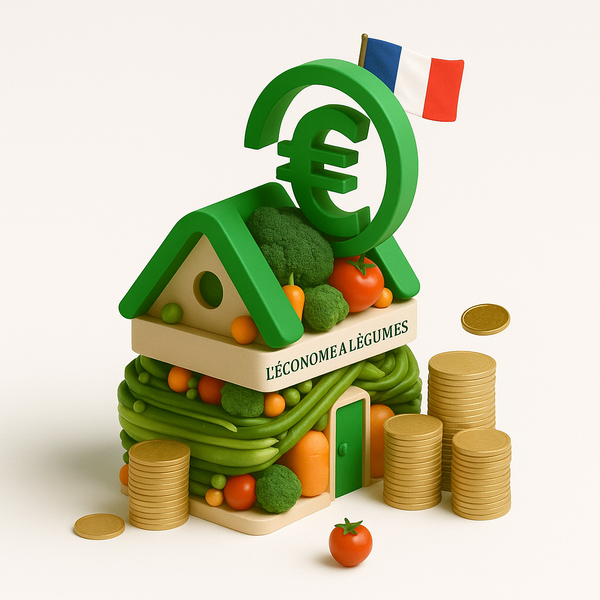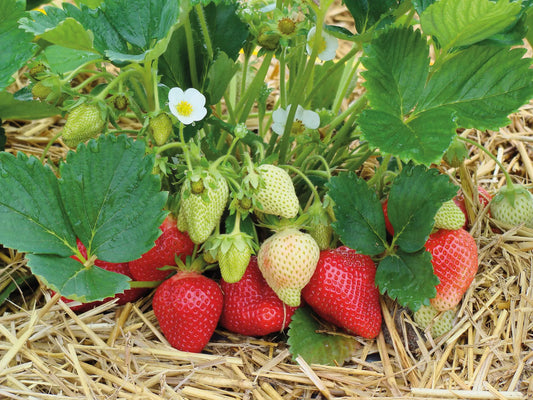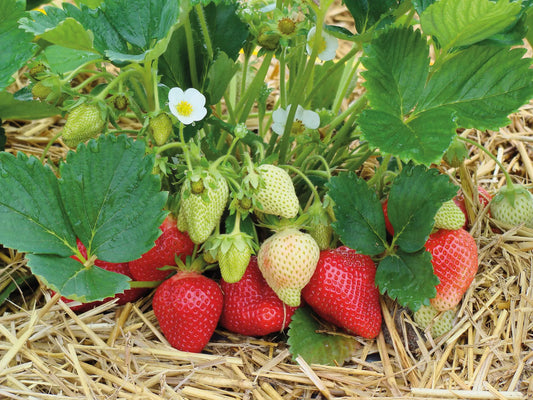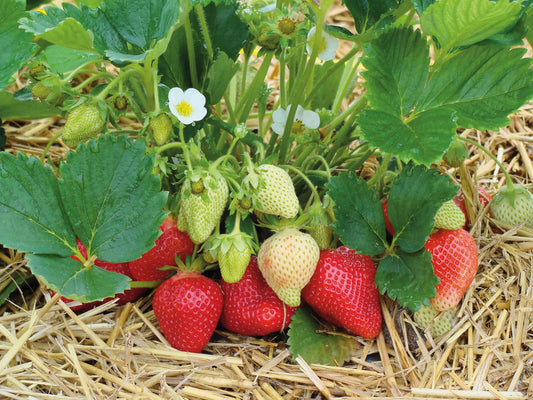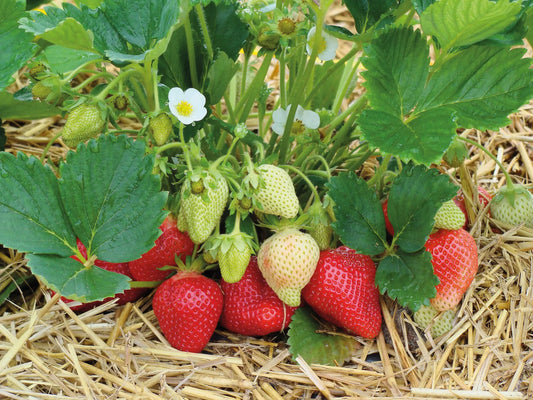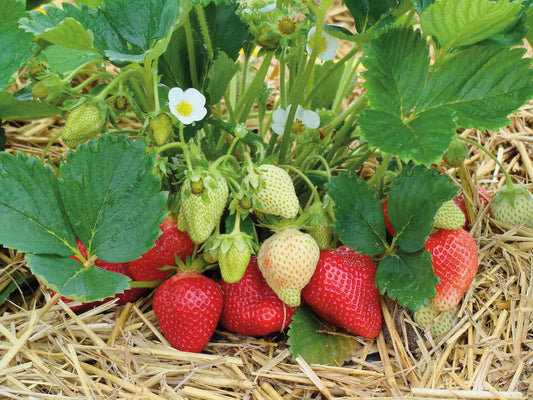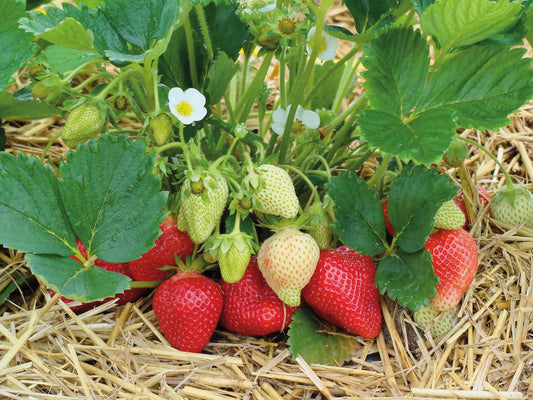Our Alba Strawberry plants at producer prices
Buy now and get it delivered when you're ready to plant
-
Alba Organic Potted Strawberry Plant
Regular price €0,33 EURRegular priceUnit price / per -
Alba Frigo A- Strawberry Plant
Regular price €0,17 EURRegular priceUnit price / per -
Alba Frigo A++ Strawberry Plant
Regular price €0,32 EURRegular priceUnit price / per -
Alba Frigo A+ Strawberry Plant
Regular price €0,26 EURRegular priceUnit price / per -
Alba Frigo A Strawberry Plant
Regular price €0,18 EURRegular priceUnit price / per -
Alba Fresh Bare-Root Strawberry Plant
Regular price €0,19 EURRegular priceUnit price / per -
Alba Potted Strawberry Plant
Regular price €0,27 EURRegular priceUnit price / per
Collapsible content
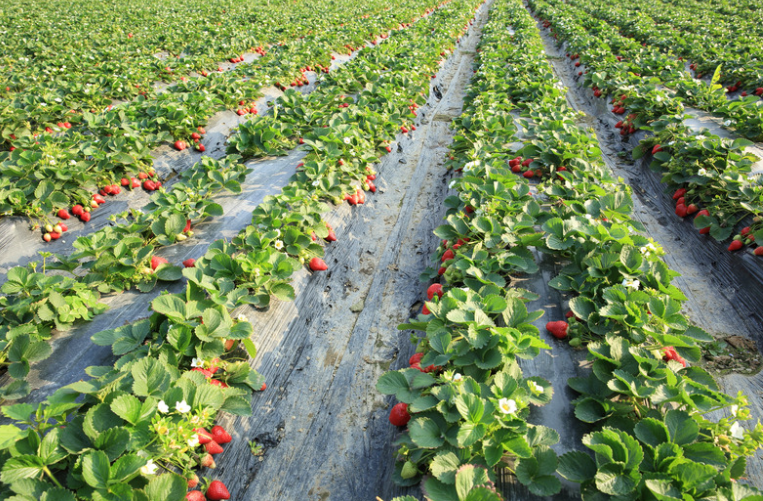
Strawberry Plant Buying Guide: What Type of Plants? For What Market Opportunity?
Which format should you choose: refrigerated, fresh, tray-plants, waiting bed, or plugs? Compare yields, costs, and harvest times at a glance.
Download the PDF guide (13 pages)
Why read this guide?
- Comparison tables: yield (300–600 g/plant), cost & labor.
- Reservation/delivery calendar for each format.
- Minimum order: 20 to 1,000 plants depending on the type.
- Full-field vs. above-ground case studies to maximize margin.
Overview of the 5 professional formats
Detailed comparison of formats
| Format | Yield (g/plant) |
Harvest time | Min. order | Average cost |
|---|---|---|---|---|
| Fridge | 250 – 400 | 120 days | 20 plants | 0.20 – 0.45 € |
| Costs | 280 – 420 | 140 days | 200 plants | 0.20 – 0.45 € |
| Tray plant | 400 – 600 | 90 days | 500 plants | 0.75 – 0.80 € |
| Waiting Bed | 300 – 500 | 105 days | 500 plants | 0.50 – 0.60 € |
| Motte | 230 – 350 | N+1 | 1,000 plants | 0.35 – 0.50 € |
Delivery schedule
| Plant type | Jan | Feb | Mar | Apr | May | Jul | Jul | Aug | Sep | Oct | Nov | Dec |
|---|---|---|---|---|---|---|---|---|---|---|---|---|
| Fridge | ||||||||||||
| Tray plants | ||||||||||||
| Waiting Bed | ||||||||||||
| Motte | ||||||||||||
| Costs |
Which format for which scenario?
Full field controlled budget
Fridge or Fresh : cost 2 x lower than tray plants, planting flexibility.
Above ground in greenhouse
Tray-plants : harvest 90 days after planting, uniform size, reduced labor.
Late planting
Mottes : planting July–August, rapid recovery, harvest the following year.
Ready to plan your plantings?
Download the complete guide Request a quoteFrequently Asked Questions
Is the guide free?
Yes, no fees or obligation to purchase.
How to download it?
Click the button “Download the guide” ; the PDF opens immediately.
Can I request a personalized quote?
Of course: write to us at contact@fraisiverse.com and an agronomist will respond to you within 24 hours.
Choosing the right strawberry varieties for your plot
Extend your harvest season by up to 5.5 months with our "early + season + everbearing" method. Compare 78 cultivars, sizes, and markets.
Download the PDF guide (17 pages)
4 axes to decide quickly
- Harvest Window : Early, Seasonal, or Everbearing? Combine them for 5.5 months .
- Commercial outlet : direct sales, long circuit, processing or freezing.
- Type of plants : fridge, fresh, root ball, tray plants… adapt your investments and your schedule.
- Growing conditions : open field, soilless, greenhouse; target consistent yield and size.
Axis 1: Select your harvest window
Example of recommended mix:
- Ciflorette (early) → Rubis des Jardins (season) → Charlotte (remontant).
- 5.5 months of continuous production, ideal for direct sales.
Axis 2: Sell at the right market
Direct sales
Ciflorette, Charlotte, Mara des Bois: premium taste sought after by consumers.
Long circuit / GMS
Magnum, Clery, Dream: uniform size, 95% class 1 fruit.
Transformation
Darselect, Mara des Bois – high sugar content and stable aroma.
Freezing
Honeoye, Belrubi – firm flesh, keeps well in the cold.
Axis 3: Choose the right type of plants
| Kind | Reservation | Delivery | Highlights |
|---|---|---|---|
| Fridge | All year round | Dec. → Aug. | Flexibility & price |
| Tray plants | Feb. → June | Nov. → Apr. | Above ground, harvest 90 days after planting |
| Motte | Sep. → May | Jul. → Sep. | Ideal for open fields, harvest N+1 |
| Costs | Feb. → Aug. | Sep. → Nov. | Young plants, rapid recovery |
Axis 4: Optimize your technical constraints
Tray plants guarantee +25% yield and simplified harvesting above ground; ideal for mechanizing your production and ensuring consistent size.
Frequently Asked Questions
Is the guide really free?
Yes, with no cost or obligation to purchase.
How to download it?
Just click the button “Download the guide” at the top of the page; the PDF opens immediately.
Can I request a personalized quote?
Of course: contact us via our contact page .
When to plant? When to harvest?
Do you want to start a strawberry farm but don't know when to reserve your plants, when to plant them or even harvest them?
Because we love 🍓 (with just a little sugar), we're going to do the work for you. On this page, you'll find the growing steps for each type of strawberry plant. When to order? What is the delivery period? When to plant? And finally, when to harvest?
Production Calendar - Frigo Strawberry Plants
| Production Calendar - Frigo Strawberry Plants | ||||||||||||||||||||||||
|---|---|---|---|---|---|---|---|---|---|---|---|---|---|---|---|---|---|---|---|---|---|---|---|---|
| Jan | Feb | Mar | Apr | May | Jun | Jul | Aug | Sep | Oct | Nov | Dec | |||||||||||||
| Reservation | ||||||||||||||||||||||||
| Deliverable | ||||||||||||||||||||||||
| Recommended planting | ||||||||||||||||||||||||
| Harvest | ||||||||||||||||||||||||
Production Calendar - Fresh Bare-Root Strawberry Plants
| Production Calendar - Bare Root Strawberry Plants | ||||||||||||||||||||||||
|---|---|---|---|---|---|---|---|---|---|---|---|---|---|---|---|---|---|---|---|---|---|---|---|---|
| Jan | Feb | Mar | Apr | May | Jun | Jul | Aug | Sep | Oct | Nov | Dec | |||||||||||||
| Reservation | ||||||||||||||||||||||||
| Deliverable | ||||||||||||||||||||||||
| Recommended planting | ||||||||||||||||||||||||
| Harvest | ||||||||||||||||||||||||
Production Calendar - Strawberry Plants Plugs
| Production Calendar - Strawberry Plants Motte | ||||||||||||||||||||||||
|---|---|---|---|---|---|---|---|---|---|---|---|---|---|---|---|---|---|---|---|---|---|---|---|---|
| Jan | Feb | Mar | Apr | May | Jun | Jul | Aug | Sep | Oct | Nov | Dec | |||||||||||||
| Reservation | ||||||||||||||||||||||||
| Deliverable | ||||||||||||||||||||||||
| Recommended planting | ||||||||||||||||||||||||
| Harvest | ||||||||||||||||||||||||
Production Calendar - Strawberry Plant Tray
| Production Calendar - Strawberry Plants Motte | ||||||||||||||||||||||||
|---|---|---|---|---|---|---|---|---|---|---|---|---|---|---|---|---|---|---|---|---|---|---|---|---|
| Jan | Feb | Mar | Apr | May | Jun | Jul | Aug | Sep | Oct | Nov | Dec | |||||||||||||
| Reservation | ||||||||||||||||||||||||
| Deliverable | ||||||||||||||||||||||||
| Recommended planting | ||||||||||||||||||||||||
| Harvest | ||||||||||||||||||||||||
Our Growing Guides by Plant Type / Our Growing Tips
Our online advisor: Fraisibot
Our technical itineraries by type of strawberry plant:
Technical Itinerary for Growing Strawberries from Frigo Plants
Technical Itinerary for Growing Strawberries from Plug/Pod Plants
Technical Instructions for Growing Strawberries from Tray or Mini Tray Plants
Technical Guide for Growing Strawberries from Bare-Root Fresh Strawberry Plants
Technical Instructions for Growing Strawberries from Waiting Bed Plants
All our growing tips for planting strawberries:
Strawberry Plants: Soil Preparation and Planting
Soil preparation for strawberry growing, planting techniques, and optimizing strawberry yield.
Best Practices for Irrigation and Fertilization of Strawberry Plants
Efficient irrigation systems, frequency and quantity of watering, types of fertilizers and application times, signs of nutritional deficiencies, growing strawberries in substrate, protection against frost and diseases.
Protection and Prevention of Strawberry Diseases and Pests
The main diseases and pests affecting strawberries, as well as effective methods for their prevention and treatment, including biological control and the use of resistant varieties. It provides practical advice for maintaining healthy and productive strawberry crops.
Succeeding in Strawberry Farming: Costs, Business Strategy and Subsidies
Growing strawberries requires significant initial and ongoing costs, but with effective marketing strategies and sustainable practices, growers can maximize their profits while contributing positively to the environment. Grants and financial aid are available to support necessary investments and encourage environmentally friendly farming practices.
Maximizing Strawberry Harvest and Storage: A Practical Guide
How to determine the optimal time to harvest strawberries, best practices for minimizing fruit damage during picking, and effective methods for storing and managing unsold strawberries to avoid losses and maximize profitability. It offers practical tips for extending the shelf life of strawberries, including refrigeration, freezing, and dehydration.
Strawberry Growing: Why Stagger Production? Early, Seasonal, Late? How to Choose?
Staggering strawberry production allows for harvests to be spread throughout the season, ensuring optimal fruit quality and increased profitability. Learn about recommended varieties for early, mid-season, and late-season production, as well as best practices for harvesting and storage.
-
Delivery from 10 plants to France, Switzerland and Europe
Delivery methodWe deliver anywhere in France as quickly as possible. Cost/quality balance is our priority.
-
Strawberry Plant Wholesale Supplier
About UsWe work with dozens of producers to offer you the best prices.
-
Quality Strawberry Plants
Strawberry Technical ItinerariesOur producers are selected for their reliability and the quality of their products.
-
Collection: Our Alba Strawberry plants at producer prices
Technical sheet for the Alba strawberry variety
- Remontant: Non-Remontant
- Precocity: Medium-early
- Harvest period: End of May to end of June
- Shape, texture, appearance of the Fruit: Elongated and uniform
- Fruit color: Bright red
- Taste characteristics: Classic taste. More appreciated for its yield than for its taste qualities
- Fruit Size: Classic taste. More appreciated for its yield than for its taste qualities
- Disease resistance: Hardy, not very susceptible to diseases, sensitive to herbicides
- Yield, management and marketing: Easy to pick which optimizes yield. Average yield of 1.2KG per plant at maturity
- Recommended commercial use / marketing channel: Direct sales, Wholesale, Processing
- Our advice: Perfect for continental production
Order your professional strawberry plants
Fraisiverse , a specialist wholesale supplier of strawberry plants , offers professional growers the Alba variety, renowned for its high yield and excellent size. Buying your strawberry plants means benefiting from professional quality from specialized nurseries, adapted to the requirements of the fresh market. Our plants are selected for their robustness, high yield, natural disease tolerance and adaptation to French conditions. Fast and careful delivery throughout France , accompanied by personalized advice and dedicated technical support . Whether you are aiming for early production or intensive marketing, Alba is a reliable and productive choice. Take advantage of our producer prices and reserve your strawberry plants now to guarantee optimal planting next season. Order now to secure your stock with a responsive and committed supplier.
Alba Strawberry - Varietal Characteristics and Professional Management
The Alba variety is positioned as a non-remontant strawberry plant , classified as mid-early to early, a "short day" characteristic meaning that it produces a single wave of fruit over a concentrated period. This specificity makes it a preferred option for a massive and optimized harvest. With notable robustness and great ease of cultivation, the Alba strawberry plant adapts perfectly to the climatic conditions of continental France.
Morphological and qualitative characteristics of the fruit
Alba fruits are distinguished by their very large caliber , a major asset for marketing. They are generally elongated, of exemplary regularity and uniformity, with an average weight of around 25 grams per fruit , which can reach 25 to 30 grams under optimal production conditions. The visual appearance is particularly neat: the external color is a bright, vibrant and uniform red over the entire surface, while the flesh, also red, is well colored right down to the heart, limiting undesirable white or greenish areas. The surface of the fruits is smooth and shiny, and their firmness contributes to their robustness, thus facilitating handling and transport. The peduncle, for its part, is very green and detaches easily, a detail that optimizes harvesting operations. In terms of taste, the Alba offers a taste considered "classic" or "average", its main attraction lying more in its productivity and presentation than in exceptional organoleptic qualities.
Cultural itinerary and technical management
To maintain optimal productivity and impeccable health, the recommended productive lifespan for an Alba strawberry plant under professional conditions is three to four years . Beyond the third year, there is generally a significant decline in yield, as well as in the size and quality of the fruit. From a phytosanitary perspective, disease susceptibility also increases after this period, often due to soil fatigue, the accumulation of pathogens, whether fungal or viral, and a general decrease in plant vigor.
Cultural recommendations
To ensure sustained production, it is strongly recommended to renew Alba plantings every three years . Best cultural practices for this variety include the use of rich, well-drained soil, regular cutting of runners to strengthen the mother plant, adequate fertilization and rigorous watering management to avoid excess watering which could encourage the development of diseases. The Alba variety also prefers well-drained soils, without being excessively sandy, and benefits from good exposure to winter cold to ensure optimal production.
Yield and production schedule
The Alba strawberry plant is known for its high yield , one of its major qualities for professionals. Under standard growing conditions in France, a yield of around 1.2 kg per plant is commonly observed over a season. Extrapolating this figure per hectare, for a professional planting density of around 50,000 plants per hectare, we can anticipate an average yield of 60 tonnes per hectare . This range can extend from 48 t/ha to 72 t/ha, depending on the chosen planting density (between 40,000 and 60,000 plants/ha) and the specific growing conditions.
Flowering period and harvest window
The flowering of the Alba variety, as a "short day" variety, generally begins in spring, between the second half of April and the beginning of May , and lasts about two to three weeks. This concentrated flowering results in a main and intense harvest period, extending from the end of May to the end of June in the plains, under a typical French continental climate. About 70% of the total Alba production is harvested in a narrow window of three to four weeks, typically occurring from the last week of May to the third week of June.
Regional variations in the calendar
Harvest periods may vary slightly depending on the French regions:
- In the South-East and South-West, characterized by a milder climate, the harvest can sometimes begin as early as the second half of May, extending until the beginning or mid-June.
- For the Loire Valley and the Paris Basin, under a more classic continental climate, the most common window is from the end of May to the end of June.
- In the Grand Est and Nord regions, as well as at higher altitudes where the climate is cooler, the harvest can be delayed by around seven to ten days, starting in early June and continuing until early July.
- Growing in a greenhouse or shelter can also increase precocity by seven to fifteen days depending on climatic conditions and the level of forcing.
This concentration of the harvest is an asset for labor planning and marketing logistics.
Phytosanitary protection and resistance
The Alba variety is known for its good natural resistance to common diseases and heat, which contributes to its stable yield and ease of cultivation. However, it is important to note that, as with any intensive crop, disease susceptibility can increase after three years, due to plant fatigue and the accumulation of fungal and viral pathogens in the soil.
There are no precise figures or detailed quantitative studies on the level of resistance of Alba to major strawberry diseases (botrytis, powdery mildew, anthracnose, phytophthora, verticillium wilt) or to common pests (thrips, aphids, spider mites, weevil, Drosophila suzukii) in the sources consulted. The mention of its "good natural resistance to common diseases" suggests general robustness, but does not exempt the producer from careful monitoring and the implementation of integrated pest management practices. It is therefore recommended, to promote this variety, to highlight its hardiness and ease of cultivation, while emphasizing the need for vigilance and pest management as for any other cultivar.
Commercial opportunities and market positioning
The primary commercial use of the Alba strawberry plant is undoubtedly fresh consumption . This orientation is dictated by the variety's ability to produce large, firm, and visually attractive fruits, offering excellent shelf life and during transport. These qualities make it a preferred choice for direct sales or the retail market. The absence of any mention of priority use in industrial processing (jams, frozen foods, juices) or in the agro-industry for Alba indicates that its share in this sector is marginal, and that it does not compete with varieties specifically selected for these outlets.
Logistical and economic advantages
Alba's positioning in the fresh market is also reinforced by its high productivity (up to 1.2 kg per plant). Concentrating production over a short period (end of May to end of June) is a logistical advantage, promoting a high yield in a limited time and thus optimizing the speed of harvesting and packaging. The fruits are easy to pick thanks to their good stability and firmness, which helps reduce labor costs and harvest losses. Alba is therefore favored in professional circuits seeking both yield and efficiency for fresh fruit markets.
Field feedback and professional recommendations
The experience of French professional producers attests to the relevance of the Alba plantation renewal cycle . The majority of them choose to renew their plants every three years in order to maintain optimal quality and quantity of production. This choice is corroborated by the observation that the yield, size and quality of the fruits begin to decline significantly beyond three years.
Alba is widely recognized for its high yield, hardiness, and ease of cultivation—essential attributes in professional agriculture. Growers particularly appreciate the significantly higher size of Alba fruit compared to many traditional non-everbearing varieties like Gariguette or Charlotte—a sought-after advantage for maximizing yield per kilo and simplifying harvesting and marketing operations. It is particularly favored in professional channels that prioritize high yield and rapid harvesting to efficiently supply fresh fruit markets.
To summarize: Our Alba strawberry plants
In summary, the Alba variety appeals to many strawberry growers with its agronomic qualities and ease of management. Thanks to its very large size, its productivity of up to 1.2 kg per plant, and its good transport resistance, it is ideal for direct sales channels or fresh produce sections. Fraisiverse , a specialist wholesale supplier of strawberry plants , offers you this high-performance variety in professional packaging. The plants are produced by specialized nurseries, offering excellent health and production consistency appreciated in the field. By choosing to buy Alba strawberry plants from Fraisiverse, you secure your yield while benefiting from a dedicated technical service. Thanks to a concentrated harvest period between the end of May and the end of June, Alba facilitates labor planning and logistics optimization. This "short day" variety allows for a massive harvest in a short time, with consistent quality throughout the season. Our plants are delivered quickly throughout France, in packaging adapted to professional requirements. Whether you grow in the plains or at altitude, Alba adapts to your constraints. As a specialist wholesale supplier of strawberry plants , Fraisiverse supports you with personalized advice at every stage. For producers looking for a good compromise between yield, size and robustness, buying Alba strawberry plants remains a strategic solution. Also take advantage of our decreasing prices for volume orders. With Fraisiverse, a specialist wholesale supplier of strawberry plants , you are assured of purchasing Alba strawberry plants under the best technical and commercial conditions on the market.
Fraisiverse - Your supplier of quality strawberry plants. Organic or conventional. Delivery throughout France. Wide range of strawberry plants: Tray Strawberry Plants, Motte Strawberry Plants, Frigo Strawberry Plants, Waiting Bed Strawberry Plants. Strawberry plants for professional and private strawberry growers
